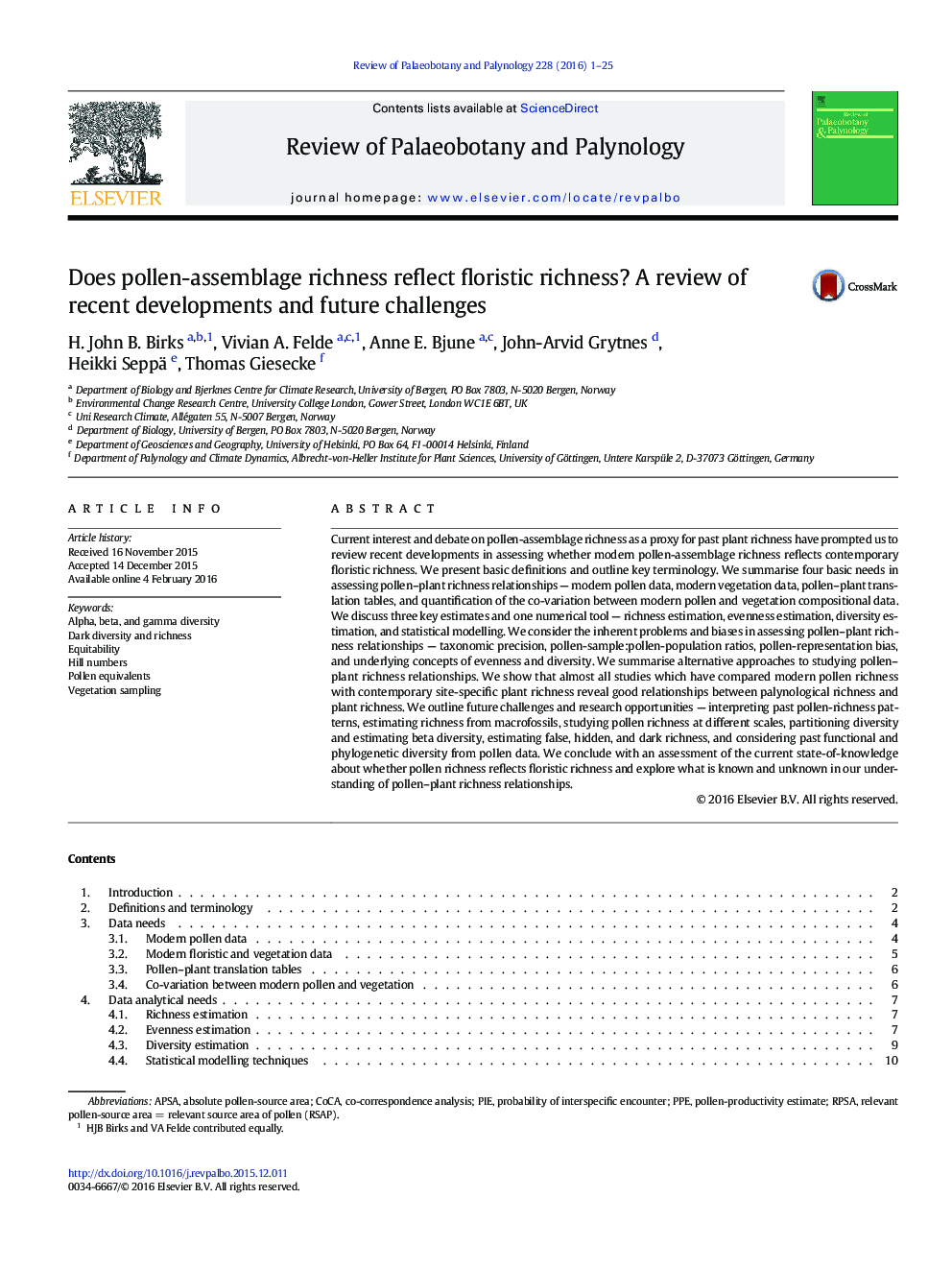| کد مقاله | کد نشریه | سال انتشار | مقاله انگلیسی | نسخه تمام متن |
|---|---|---|---|---|
| 4750093 | 1642469 | 2016 | 25 صفحه PDF | دانلود رایگان |
• Modern pollen richness reflects modern vegetation richness after various bias are minimised
• Modern pollen richness also reflects modern landscape structure
• Modern pollen–floristic richness studies need detailed data and numerical methods to compare the datasets
Current interest and debate on pollen-assemblage richness as a proxy for past plant richness have prompted us to review recent developments in assessing whether modern pollen-assemblage richness reflects contemporary floristic richness. We present basic definitions and outline key terminology. We summarise four basic needs in assessing pollen–plant richness relationships — modern pollen data, modern vegetation data, pollen–plant translation tables, and quantification of the co-variation between modern pollen and vegetation compositional data. We discuss three key estimates and one numerical tool — richness estimation, evenness estimation, diversity estimation, and statistical modelling. We consider the inherent problems and biases in assessing pollen–plant richness relationships — taxonomic precision, pollen-sample:pollen-population ratios, pollen-representation bias, and underlying concepts of evenness and diversity. We summarise alternative approaches to studying pollen–plant richness relationships. We show that almost all studies which have compared modern pollen richness with contemporary site-specific plant richness reveal good relationships between palynological richness and plant richness. We outline future challenges and research opportunities — interpreting past pollen-richness patterns, estimating richness from macrofossils, studying pollen richness at different scales, partitioning diversity and estimating beta diversity, estimating false, hidden, and dark richness, and considering past functional and phylogenetic diversity from pollen data. We conclude with an assessment of the current state-of-knowledge about whether pollen richness reflects floristic richness and explore what is known and unknown in our understanding of pollen–plant richness relationships.
Journal: Review of Palaeobotany and Palynology - Volume 228, May 2016, Pages 1–25
